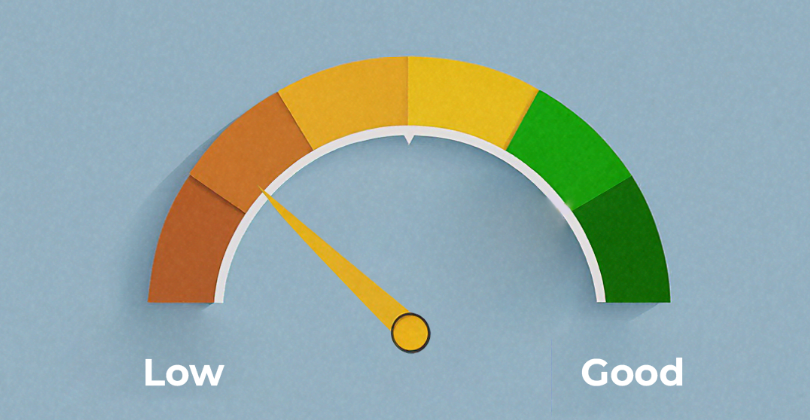As consumers, we constantly seek ways to streamline our decision-making processes. This is particularly true for big-ticket items like personal loans, business loans, car loans,
Taking a home loan is a big step – one of the most significant financial responsibilities you might take on. However, understanding the financial commitment, including EMI calculations, can sometimes seem overwhelming. Learning how to calculate your home loan EMI accurately with Excel can be a smart move. EMI calculations might seem daunting initially, but once you grasp the concept, you'll realise it's not as complicated as you thought. Let's delve into understanding how these EMIs work.
Understanding Home Loan EMI
Before we dive into the Excel details, let's grasp the basics of EMI. Simply put, it's the fixed amount you pay your lender each month to settle your loan. It comprises the principal amount borrowed and the interest the lender charges.
What is the EMI Formula in Excel?
Now, let's talk about the EMI formula in Excel in an easy way.
You just need to remember this formula: = PMT(RATE, NPER, PV, FV, TYPE)
Let's break it down:
-
RATE is the Rate of Interest, but here's the trick: you need to enter the monthly rate, not the yearly one. If the bank gives you an annual rate, just divide it by 12 and enter that.
-
NPER is the loan tenure, basically how many instalments you'll pay.
-
PV is the principal amount, which is what you're borrowing.
-
FV is the future value, or what's left to pay after you've made all your previous payments.
-
Lastly, TYPE is a number: 0 or 1. If your payment is due at the beginning of the month, put 1. If it's due at the end of the month, put 0.
Once you've got all those values, just pop them into the formula in Excel, and voila! You've got your EMI calculated. Easy, right?
How to Calculate EMI in Excel?
Financial institutions use a formula to calculate EMIs in Excel, and here it is:
EMI = (P X R/12) X [(1+R/12) ^N] / [(1+R/12) ^N-1]
In this formula:
-
P stands for the principal amount, the loan amount you borrowed.
-
R is the interest rate on your loan.
-
N represents the loan repayment tenure or how long you must repay it.
Factors that Could Fluctuate EMI Amount
In the Excel sheet for the EMI calculator, you'll spot various factors that could shift your payment each month:
-
Total Loan Amount: It is a starting point and greatly impacts the monthly instalment you pay. Your EMIs will increase in proportion to your total borrowed amount.
-
Repayment Tenure: When using the Excel EMI calculator, you must input the tenure or the number of payments. Less EMI is associated with longer tenure. It is highly recommended that you repay the loan as soon as you can, based on what tenure suits you best.
-
Interest Rate: A borrower's credit score and income are two of the main qualifying elements that affect interest rates. This means that each person's interest rate is unique.
-
Margin Amount: The chunk of the loan sum the applicant must pay is known as the margin amount or down payment. The bigger the margin, the smaller the principal amount upon which the EMI is computed. As a result, the EMI's overall value drops.
The Change in EMI Over Time
Usually, your EMI stays the same for the entire loan duration. Nevertheless, there are times when EMIs change due to unforeseen circumstances. Here's why:
-
Floating Interest Rate: If you have a loan with a floating interest rate, it can go up or down based on market conditions. So, when interest rates go down, your EMI drops, too, and when they go up, your EMI also goes up.
-
Loan Prepayment: If you decide to pay off a chunk of your loan early, your EMI might change. This can reduce the overall amount you owe.
-
Progressive EMI: Some lenders offer a plan where your EMIs start off smaller and gradually increase over time. This means as your income grows, you pay off the loan faster.
Why Bother Figuring Out Your EMI Before Getting a Loan?
There are several advantages to determining EMI before applying for a loan. This includes:
-
Keeping a close eye on your finances and understanding your EMI ahead of time reduces the chances of missing payments or falling into loan defaults. Plus, it helps you make other plans accordingly.
-
You can get the best offer by considering several lenders while evaluating quotes.
-
You get the flexibility to customise the loan amount and payback term to fit your specific requirements and budgetary constraints.
-
It significantly reduces the chances of loan application rejection.
-
It guarantees on-time repayments and helps build a solid credit score.
Conclusion
Figuring out EMI Math using Excel is easy once you know the correct formula. But if you're not keen on crunching numbers, no problem! Most banks have handy online tools called EMI calculators. Just input basic details like the loan amount, interest rate, and loan term, and you're done! Your EMI amount pops up in no time.
AUTHOR
KreditBee As a market leader in the Fintech industry, we strive to bring you the best information to help you manage finances better. These blogs aim to make complicated monetary matters a whole lot simpler.







